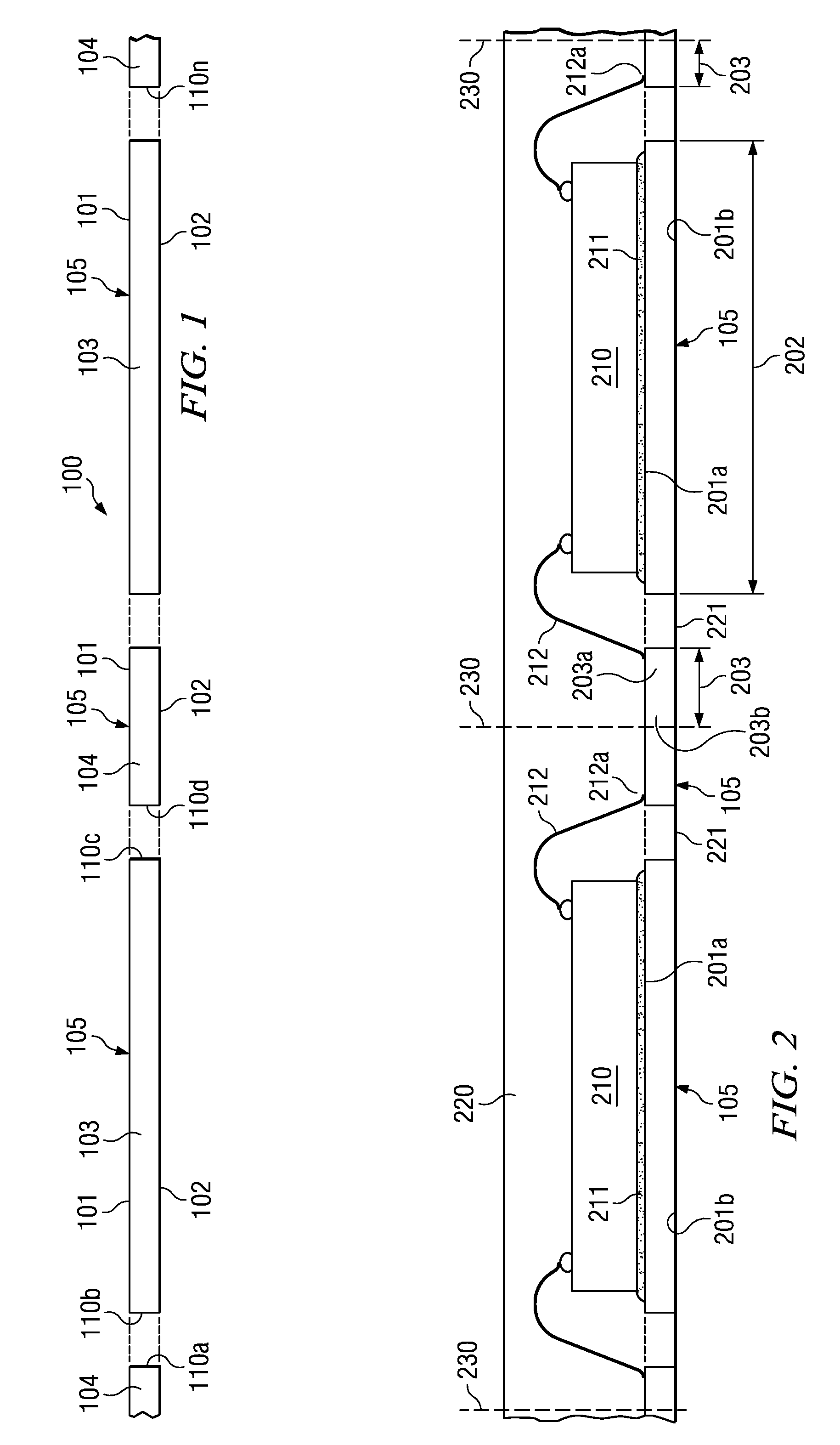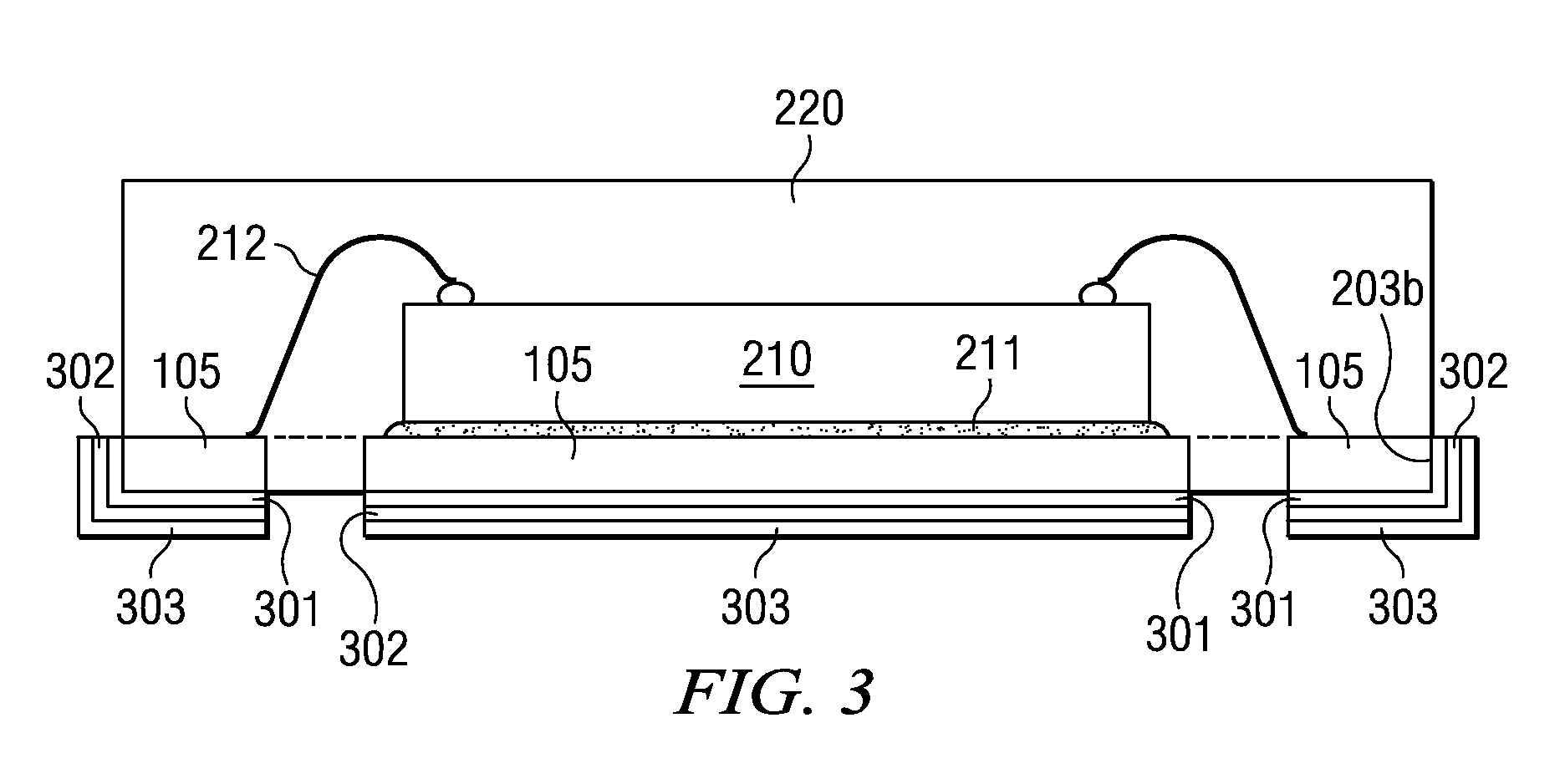Aluminum leadframes for semiconductor QFN/SON devices
a technology of leadframes and semiconductors, applied in semiconductor devices, semiconductor/solid-state device details, electrical apparatus, etc., can solve the problems of more and more complicated to find a satisfactory solution for maintaining good adhesion, and achieve good adhesion, prevent moisture ingress and corrosion, and easy bondability
- Summary
- Abstract
- Description
- Claims
- Application Information
AI Technical Summary
Benefits of technology
Problems solved by technology
Method used
Image
Examples
Embodiment Construction
[0020] In conventional surface mount packages for semiconductor devices, which have cantilevered leads bent in a small-outline S-shape or J-shape, the leadframe material is expected to provide the ductility to offer an elongation of at least 5 to 10% in order to satisfy the requirements of outer segment forming, which is usually the last process step in the fabrication flow. The metal ductility needed for the forming process is readily provided by the ductility of copper or copper alloy as starting material. On the other hand, to provide a similar metal ductility with aluminum as starting material of the leadframe is much more challenging. Material characteristics such as thermal history, alloyed mixtures, or plated surface metal layers have to be carefully selected in order to make aluminum suitable as base material for leadframes with cantilevered leads.
[0021] Applicant recognizes that these requirements and limitations become much less of concern in leadframes, which lack cantil...
PUM
 Login to View More
Login to View More Abstract
Description
Claims
Application Information
 Login to View More
Login to View More - R&D
- Intellectual Property
- Life Sciences
- Materials
- Tech Scout
- Unparalleled Data Quality
- Higher Quality Content
- 60% Fewer Hallucinations
Browse by: Latest US Patents, China's latest patents, Technical Efficacy Thesaurus, Application Domain, Technology Topic, Popular Technical Reports.
© 2025 PatSnap. All rights reserved.Legal|Privacy policy|Modern Slavery Act Transparency Statement|Sitemap|About US| Contact US: help@patsnap.com



